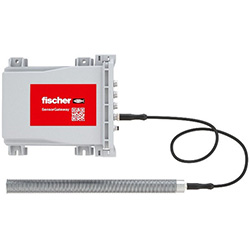
Alongside an estimated 6 million EV car shipments by the end of 2022, manufacturers find themselves tasked with developing ever-evolving battery technology. As range, heat and lightweighting concerns still pervade the market, manufacturers are completely rethinking the structure, design and makeup of their batteries.
As of this year, some companies have found ways to build EV fuel cells into the car’s frame itself. Aiming to increase range and decrease cost, revolutionising the structure of the battery saves space for more fuel cells and makes for a roomier interior for passengers.
Other businesses are focusing on SSBs, or solid-state batteries. Seen as a safer and more efficient option than their lithium-ion counterparts, some EV manufacturers are aiming to produce their SSBs for market introduction within the next five years. Aside from more established companies, many EV startups are also revolutionising the market, with one business boasting the development of a battery that charges in just a few minutes.
It’s well known that the production of EV batteries is expensive, but heat and lightweighting issues are also hindering these business’ product optimisation. Range anxiety is also still a problem, but the best solution isn’t necessarily creating a bigger battery. Leading to what is known in the industry as the ‘weight spiral’, creating a bigger battery would require bigger brakes, bigger wheels, and a stronger structure. EVs also tend to be much heavier than their petrol or diesel counterparts, which can negatively impact their emission levels through tyre wear and even impinge on the car’s safety.
Internal and external heat can also have a very negative impact on battery performance. An EV’s driving range can decrease by 17% in hot weather, and up to 41% in cold weather. Not only this, but studies have shown that the use of electric vehicles in hot weather can significantly decrease battery health, diminishing its lifetime.
Both these issues contribute to customers’ potential range anxiety, rendering them apprehensive about investing in an electric vehicle. It’s crucial, then, that battery manufacturers prioritise solutions to their heat and lightweighting issues.
How Optimas can help
For all EV manufacturers, it’s important to use the correct, high-quality C-Class components and fasteners. EV fasteners may only account for 1% of your project budget, but they can make up nearly 50% of your product’s parts, so it’s important you choose the right ones.
Here at Optimas, not only do we have an industry-leading product range, but we’re experts in all things EV. We know that with greater electrification, comes a greater need for insulation. To avoid depleting battery performance, it’s crucial that manufacturers prioritise thermal insulation in the initial design stage to avoid both internal over-heating and damage done by external conditions.
Here are just a few products from our range of EV fasteners and C-Class Components that are ideal for providing insulation and eliminating unwanted thermal conductivity:
- Nylon Machine Screws
- Double Ended Studs with Hex Collar and Black Xylan Insulation
- Braided Sleeving
- Heat Shrink Tubing
- Gland Plates
The smallest parts can also have the biggest impact on weight. Even down to EV fasteners, it’s important you prioritise using light-weight materials at every opportunity. Using materials like aluminium, magnesium and titanium can massively reduce the weight of an EV battery. Not only this, but changing the geometry of a fastener can reduce weight by as much as 35%. At Optimas, we have a team of global fastener engineers who can work with you to improve your product’s performance.
To find out more about products, or to speak to one of our experts, you can do so here. Partner with us to optimise your products and meet demand.
Author: Optimas

 John W. Herbert, EDRA/GHIN General Secretary, shared his thoughts on the partnership, saying – “I am very much looking forward to my visit to Bergamo and to the first edition of International Hardware Fair Italy. That this is being organized by the Koelnmesse is for me a guarantee that this trade fair will be most professional and of interest to our international membership”
John W. Herbert, EDRA/GHIN General Secretary, shared his thoughts on the partnership, saying – “I am very much looking forward to my visit to Bergamo and to the first edition of International Hardware Fair Italy. That this is being organized by the Koelnmesse is for me a guarantee that this trade fair will be most professional and of interest to our international membership”  Thomas Rosolia, CEO of Koelnmesse Italy, commented “Thanks to the support of EDRA/GHIN we will continue to pursue our goal of establishing International Hardware Fair Italy as the most representative platform for the European hardware, DIY, garden & outdoor and building sectors in Italy.”
Thomas Rosolia, CEO of Koelnmesse Italy, commented “Thanks to the support of EDRA/GHIN we will continue to pursue our goal of establishing International Hardware Fair Italy as the most representative platform for the European hardware, DIY, garden & outdoor and building sectors in Italy.” WISAR relies on the scale system iSCALE of Würth Industrie Service for reporting and reordering the requirements of production materials and other small parts based on weight.
WISAR relies on the scale system iSCALE of Würth Industrie Service for reporting and reordering the requirements of production materials and other small parts based on weight. Innovative scale system iSCALE of Würth Industrie Service for digital storage management.
Innovative scale system iSCALE of Würth Industrie Service for digital storage management.
 Image 1
Image 1 Image 2
Image 2 Image 3
Image 3 Image 4
Image 4 Image 5
Image 5 Image 6
Image 6 Image 7
Image 7 Image 8
Image 8